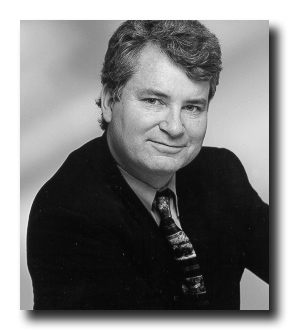29
2013The Charitable-Industrial Complex
A Post from James V. Toscano In a provocative op-ed piece in Saturday’s New York Times. Peter Buffett, Warren Buffett’s son, takes on the present system of philanthropy with deep insight, passion and some outrage. Buffett focuses on the growing inequality in the society, with the consequent increase in philanthropy by the rich, and the corresponding rise in the number of nonprofits to help “solve” the problems created by the inequality. He points out: “As more lives and communities are destroyed by the system that creates vast amounts of wealth for the few, the more heroic it sounds to “give…
02
2013And Now For Something Completely Different
A Post from James V. Toscano Bush at 60 The Bush Foundation is celebrating its 60th anniversary. Founded by Archibald Bush, a legendary 3M executive, and his wife in 1953, the Foundation has been a force in philanthropy over these years in important ways. Bush was an early leader in funding education and scholarships. A substantial portion of the $800 million given away in its first sixty years went to education in a variety of ways, from challenge grants to scholarships.
25
2013Ten Things to Look For in Prospective Board Members
A Post from Dania Toscano Miwa and James V. Toscano All of us need board members. With turnover, reluctance to serve and aging of that generation inured to board service, we are under constant pressure to recruit prospective members for nonprofit boards of directors. Where do we go? Who do we look for? What do we need? There are those mnemonics: 3W, 3G, 3T and 3M, to name just a few. Fun to recite, they are of very limited value in the actual selection process. Yes, wealth, wisdom and work (3W) nail it on one level, although point nowhere….
13
2013
Ten Steps Before Accepting a Nonprofit Board Position
A Post from James V. Toscano & Dania Toscano Miwa What a wonderful tribute and honor to be asked to serve on the board of Directors of a nonprofit organization. Being part of governance of a group providing benefit to society is a unique privilege. Nevertheless, boards have varying cultures, capacities and track records. Before acceptance, it may be wise to do some due diligence to ensure that you understand what you will be doing, what will be expected of you and how successful you will be. Here are ten things to do before accepting the invitation. 1. Read…
05
2013The First 100 Days: Ten Things a New ED Should Do
A post from James V. Toscano Whether one’s first ED position or one’s Nth time around, there are some universally important, critical things to do in the first 100 days on the job, but often are not done, for a variety of reasons, most of which aren’t valid. Sometimes those not done come to haunt the ED. Here are ten of the most vital. There are more. 1.Walk around and meet all of the staff. Arrange to meet with others not on site or away. Try to remember names and jobs; use mnemonics if they help. Continue these walks daily….
29
2013Ten Requisites to Retain Development Directors
A Post from James V. Toscano Since the release of the Underdeveloped Study, much has been written here and elsewhere about the state of development and fundraising offices and people in nonprofit organizations. We have been somewhat shocked by what we read in the report on short tenures, distrust, misunderstanding, and intentions to terminate and to leave. All in all, the report gives a picture of a disaster happening before our eyes. We know there are many places where this is not happening, yet we also know a number of nonprofits where elements of this picture are present, some in…
08
2013Charity Navigator Meets Reality
A Post from James V. Toscano Notwithstanding self-promotion, “Charity Navigator is American’s largest and most influential charity rater” and self-aggrandizement, “the largest and most utilized charity rating service that exists anywhere,” the New Jersey-based Charity Navigator is realizing the incredible complexity of its task. At first, they presented themselves as charity raters, although they based their rating stars (1-4, with 4 best) only on financial variables. They gradually became more sophisticated on this dimension through critical feedback and through their experience in examinations of large charities with at least $500K in public support and $1M in overall budget. By elimination of the…
11
2013The Two Nonprofit Sectors
A post from James V. Toscano In his post, Minnesota Council of Nonprofits’ Jon Pratt discussed “A Virtuous Cycle” referring to the recent UnderDeveloped study. He reported difficulties of smaller nonprofits in affording needed development and related infrastructure costs. The idea of a virtuous cycle for nonprofit organizations able to afford infrastructure and transaction costs provokes discussion on the haves and have-nots among us. A recent study helps. In the March 2012 Stanford Social Innovation Review article, “ Why More Nonprofits Are Getting Bigger,” authors Peter Kim and Jeffrey Bradach reported on the emergence of a new wave of large…
07
2013
Guest Post – In Defense of Taxes—Even If They Might Cut into Charitable Giving
A post by Andy Robinson This article was originally published by the Nonprofit Quarterly on January 4, 2013 In recent weeks, nonprofit organizations mobilized against the threat that Congress would limit tax deductions for charitable gifts. Because charitable deductions provide an incentive for giving, many nonprofit leaders fear that scaling them back will make it harder to raise money. Following the “fiscal cliff” negotiations, the charitable deduction remains more or less intact—at least for now. As we consider the broader implications of tax reform and government spending and gear up for legislative fights to come, I am concerned that many…
01
2013
Guest Post – Flaws in the Social Impact Bond Craze
A Post from Jon Pratt, Executive Director, Minnesota Council of Nonprofits Social Impact Bonds is a concept that is definitely at a taking-off point, with some big money and very well-known supporters (Rockefeller Foundation, Kennedy School of Government, McKinsey, New York Mayor Bloomberg, Goldman Sachs, etc.). However fast growing the Social Impact Bond promotion, there are several reasons to closely examine and question the claims made for SIBs: First, it’s easy to see why this idea is attractive — if it could deliver more resources and better results, what public official or taxpayer wouldn’t be for it? It is also…
